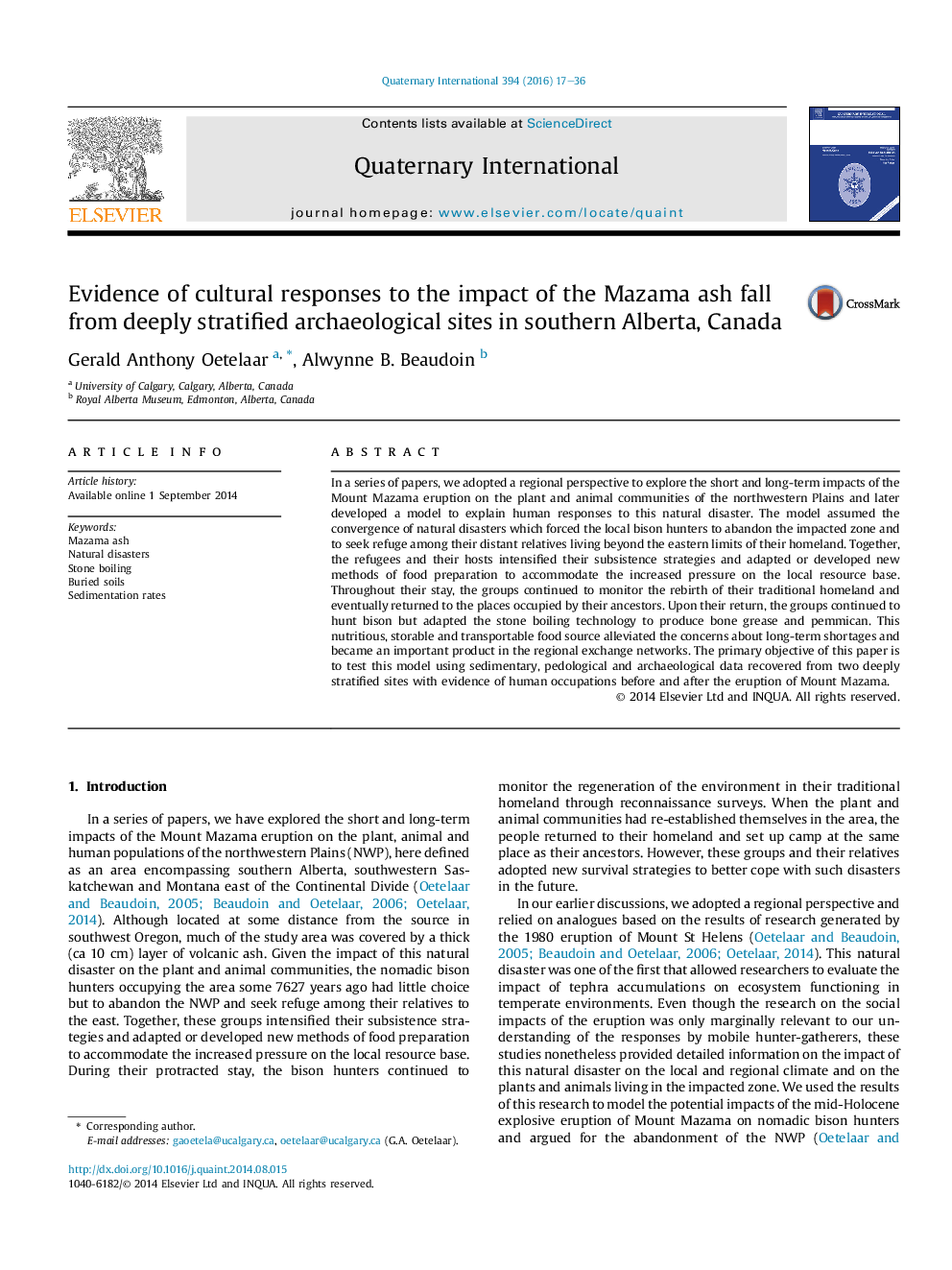| Article ID | Journal | Published Year | Pages | File Type |
|---|---|---|---|---|
| 1040304 | Quaternary International | 2016 | 20 Pages |
In a series of papers, we adopted a regional perspective to explore the short and long-term impacts of the Mount Mazama eruption on the plant and animal communities of the northwestern Plains and later developed a model to explain human responses to this natural disaster. The model assumed the convergence of natural disasters which forced the local bison hunters to abandon the impacted zone and to seek refuge among their distant relatives living beyond the eastern limits of their homeland. Together, the refugees and their hosts intensified their subsistence strategies and adapted or developed new methods of food preparation to accommodate the increased pressure on the local resource base. Throughout their stay, the groups continued to monitor the rebirth of their traditional homeland and eventually returned to the places occupied by their ancestors. Upon their return, the groups continued to hunt bison but adapted the stone boiling technology to produce bone grease and pemmican. This nutritious, storable and transportable food source alleviated the concerns about long-term shortages and became an important product in the regional exchange networks. The primary objective of this paper is to test this model using sedimentary, pedological and archaeological data recovered from two deeply stratified sites with evidence of human occupations before and after the eruption of Mount Mazama.
